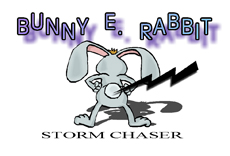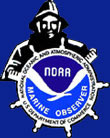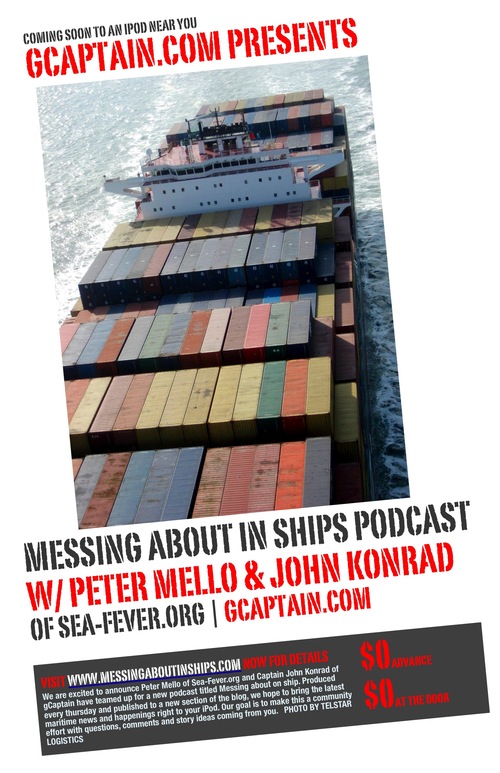 Chasing 'Thundersnow' Could Lead To More Accurate Forecasts
Chasing 'Thundersnow' Could Lead To More Accurate ForecastsScienceDaily (Jan. 15, 2009) — The job of one University of Missouri researcher could chill to the bone, but his research could make weather predicting more accurate.
Patrick Market, associate professor of atmospheric science in the College of Agriculture, Food and Natural Resources, is chasing storms in the dead of winter in order to release weather balloons that will produce data about the little-known phenomenon of thundersnow.
"One of the things we don't understand is how the cloud becomes electrified," Market said. "We hope to determine how the atmosphere is becoming unstable."
Market and his storm-chasing students are searching for winter storms in order to release weather balloons into the storm every 90 minutes over a 24-hour period. The balloons carry boxes with a barometer to measure pressure, a thermometer to measure temperature, and a hydrometer to measure humidity.
Market uses a GPS to monitor wind speed and direction of the balloons. This information covers the five things that are most important for a meteorologist to know for accurate predictions, according to Market.
"It has been decades since a detailed study with modern weather balloons has been done to see how the atmosphere destabilizes for summer thunderstorms, much less the winter storms," Market said. "So we are taking this tried-and-true tool of the meteorology trade and applying it to the very specific instance of heavy snowfall in the winter."
Once the weather balloons are launched, they provide detailed readings of every layer of the atmosphere. More detailed readings and data provide better and more accurate forecasting."We get thunderstorms in all seasons. That means something is making the atmosphere unstable," Market said. "Thunderstorms are often associated with heavy rainfall or heavy snowfall. It's just as important to get it right in the spring, summer or winter."
The phenomenon known as thundersnow is not understood very well. It is defined as a snowstorm with thunder and lightning that can bring heavy snowfalls of 8 to 12 inches. Tracking such storms can be quite a challenge.
"Often, these winter storms cause us to travel through inclement weather in order to get to the area where the weather balloons should be launched," Market said. "During travel, the heater in the vehicle cannot be on because the instruments need to be kept cold."
WEATHER NOTE
Record Shows Disasters Kill Most
Freetown — Acting director of disaster management department in the office of national security (ONS) has said in Freetown that disasters amount to greater percentage of the causes of death of the world's population.
John V. Rogers told participants at the opening ceremony of the training of trainers' clinic on disaster risk reduction for schools that though they cannot stop disasters from happening yet they can with their knowledge on disaster risk reduction and early warning signals.
"Man's negative interaction with his environment has often produced harmful effects with devastating consequences on human existence," he said.
Rogers said this sad chapter can only be reversed through learning and implementation of best practices as demonstrated in other areas of the world.
"Some of the disaster related incidences in Sierra Leone are due to illiteracy and ignorance. It has often been stated that a well informed public is a protected one," he said.
He said it has been the ardent desire of government to enhance the capacity of teachers that have played tremendous role in the disaster management school outreach programmes in the country.
The acting director noted that children were among the most vulnerable population group during a disaster especially those attending school at the time of the crisis. "Therefore learning about disaster risk reduction in schools can put teachers and children in a better position to play important role in saving lives and protecting members of the community in time of disaster."
He added that the clinic would provide the necessary tools to teachers and students in educational institutions to prepared, mitigate and respond to disasters.
On behalf of the national security coordinator, ONS chief of staff Larry Bassie said increase number of gravity of disaster with grave consequences that undermines the survival and dignity of livelihood in communities was a concern.
MARITIME NOTE
New EPIRB processing practices to reduce false distress alerts
Coast Guard says response to actual emergencies to improve
The following is the text of a feature story submitted by the U.S. Coast Guard:
Story by Petty Officer 3rd Class Melissa Hauck(ALAMEDA, Calif.) -- The Coast Guard and other emergency personnel who respond to distress calls will soon see an improvement in their ability to locate people during search and rescue cases.
This improvement centers around an emergency position indicating radio beacon (EPIRB), a device that when activated can act as a virtual lifeline from people in distress to rescue crews by sending out a transmitted signal via air, sea or land.On Feb.1, 2009 Cospas-Sarsat, an international satellite-based search and rescue (SAR) system established by the U.S., Canada, Russia and France will cease satellite processing of 121.5/243 MHz analog EPIRBs and will begin processing only the 406 MHz digital radio beacon signals, making it illegal to use the obsolete 121.5/243 MHz beacons.
The newest 406 MHz beacons incorporate global positioning system (GPS) receivers that transmit highly accurate positions of distress almost instantly to SAR agencies via the Geostationary Earth Orbit Local User Terminals (GEOSAR) satellites.
The digital frequency has been designated internationally for use only for distress. Other communications and interference, such as on 121.5 MHz analog signals, is not allowed.The change is expected to result in a substantial reduction in wasted SAR resources on false alerts while simultaneously increasing the responsiveness of the system for real distress cases."
The 121.5 MHz analog beacons produce a high incidence of false alarms and a host of other limitations that include poor signal strength, search areas that can be as large as 12 to 15 miles in radius and unreliability," said Petty Officer 2nd Class Craig Mercier, an operations specialist stationed at the District 11 command center on Coast Guard Island here."
The distress signals from the 406 MHz beacon are much more accurate than the analog beacon. Each digital beacon has a unique ID encoded within its signal that can quickly confirm that the distress is real, who they are looking for and where they should look, which will ultimately save lives," he said.When a 406 MHz signal is received, SAR authorities can retrieve information from law-required registration data that includes beacon owner contact information, emergency contact information and identifying characteristics of the vessel."
Digital EPIRBS also provide position accuracy that narrows the vessel's position to less than two miles in radius and decreases the amount of time SAR teams must search. This results in quicker response times, and is a major advantage over the 121.5 MHz beacons," he said.
The decision to stop satellite processing of 121.5 / 243 MHz signals was announced by Cospas-Sarsat nearly two years ago stating problems in the frequency band which overwhelm search and rescue authorities with poor accuracy and numerous false alerts, negatively impacting the effectiveness of lifesaving services.
The Coast Guard strongly recommends mariners obtain the new 406 MHz EBIRB and file a float plan with a friend or family member on land, with an approximate time of return and location prior to getting underway.
A float plan template can be found at http://www.floatplancentral.org/.
EPIRB owners can register their equipment in the U.S. 406 MHz Beacon Registration Database at:http://www.beaconregistration.noaa.gov/ or by calling 1-888-212-SAVE.
Beacon registration is required to be updated with accurate information every two years or when emergency contact or other information changes.
For more information on EPIRBS and the Cospas-Sarsat program visit http://www.sarsat.noaa.gov/.
Enjoy this Rollercoaster!
RS


































































































![Validate my RSS feed [Valid RSS]](valid-rss.png)